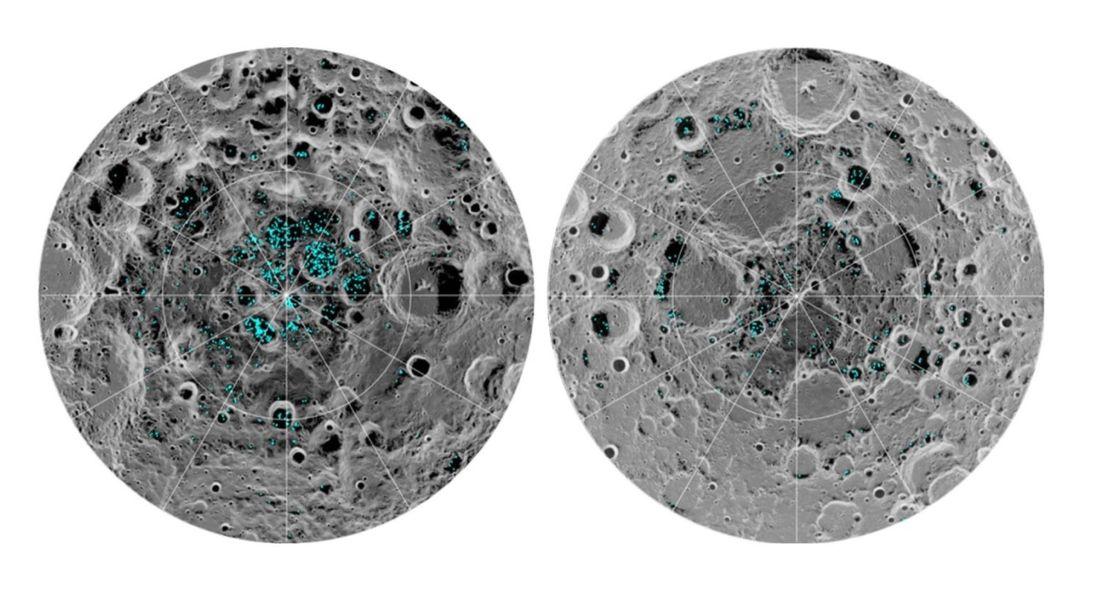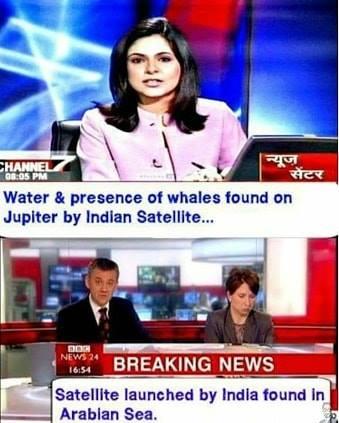So no interaction of control systems "concerns" then? Are both items SpaceX components?
Results 1,851 to 1,875 of 4335
Thread: Space News thread
-
09-08-2018, 12:10 AM #1851Thailand Expat



- Join Date
- Jul 2010
- Last Online
- 24-07-2024 @ 09:54 PM
- Location
- Where troubles melt like lemon drops
- Posts
- 25,350
-
09-08-2018, 12:58 AM #1852
-
09-08-2018, 01:08 AM #1853Thailand Expat



- Join Date
- Jul 2010
- Last Online
- 24-07-2024 @ 09:54 PM
- Location
- Where troubles melt like lemon drops
- Posts
- 25,350
My apologies for not being aware. Has NASA launched these two launchers together in the past?
-
09-08-2018, 03:13 AM #1854
I don't know. If I had to guess I would say very likely not. Delta IV Heavy is a very capable system. I don't think there was ever a probe that would have needed it before. I am not worried about the combination. Both D IV Heavy and the Star 48 solid booster are well known and very reliable systems.
Probably most people don't realise how extreme this mission is. It is harder to get that near to the sun from Earth than to leave our solar system completely. Though leaving takes a lot longer."don't attribute to malice what can be adequately explained by incompetence"
-
09-08-2018, 12:24 PM #1855
A nice video explaining how extreme the trajectory of the Parker Solar Probe is and how hard it is to get there. But the probe itself is also quite extreme. Very hard to keep it functioning that close to the sun.
-
09-08-2018, 12:49 PM #1856Thailand Expat



- Join Date
- Jul 2010
- Last Online
- 24-07-2024 @ 09:54 PM
- Location
- Where troubles melt like lemon drops
- Posts
- 25,350
Thanks, I hope you don't mind these questions from one inexperienced in the nuts and bolts of space travel.

-
09-08-2018, 02:03 PM #1857
I sure don't mind. Much of it I have to look up too. I just happen to know where and what to look for.
Always happy to have some people interested.
-
09-08-2018, 02:17 PM #1858Thailand Expat



- Join Date
- Jul 2010
- Last Online
- 24-07-2024 @ 09:54 PM
- Location
- Where troubles melt like lemon drops
- Posts
- 25,350
That you answer questions politely and informatively is sometimes missing here on TD, occasionally.
-
09-08-2018, 06:24 PM #1859
-
10-08-2018, 12:52 PM #1860
-
10-08-2018, 03:37 PM #1861
My very inquisitive 4 1/2 yo twin boys (who have just discovered Star Wars) caught me watching the Sun video and had a million questions.
So, we watched this for a brief explanation.
They got through to Saturn before the fidgeting and the call of Darth Vader and the Millennium Falcon beckoned them away
-
11-08-2018, 01:09 PM #1862
That's great. Hope they will remain interested. Way too few are.
Anybody wants to watch the launch of Parker Solar Probe live? Coverage begins on NASA TV in 55 minutes. Pre reporting is already running.
https://www.nasa.gov/multimedia/nasatv/#public
Delta IV Heavy launches are always somewhat spectacular. The boosters burn hydrogen and some of it leaks during the startup sequence. As a result that leaked hydrogen burns up once the engines start running. The rocket is engulfed in flames and gets scorched somewhat before it lifts off.
-
11-08-2018, 03:39 PM #1863
If anyone watched it on NASA TV you experienced a typical day on the pad. Several attempts and finally a scrub for the day. Another attempt the same time tomorrow.
You know how the kids of Astronauts counted down in the Mercury and Gemini era?
5, 4, 3, 2, 1, shit.
-
12-08-2018, 04:07 AM #1864
^ That's more like watching my Bank Balance.
5, 4, 3, 2, 1, oh-shit
---
NASA twins Scott and Mark Kelly are not quite as identical as they used to be
Mark and Scott Kelly are the only identical astronauts in history.
One twin went to space, the other stayed on Earth — and the year they spent apart seems to have left its mark on their DNA.
Key points:
- Scott Kelly's cognitive performance was slower than his brother's when he returned to earth
- NASA's Twins Study was created to identify risks for astronauts
- Compared to his brother, Scott's patterns of gene expression remained altered even months after landing
As part of NASA's Twins Study, astronaut Scott Kelly was sent to the International Space Station while his identical brother
Mark, also an astronaut, stayed on Earth.
NASA created the study to research how one year in space could affect the human body.
Researchers took biological samples from Scott before, during and after his mission and then compared them to Mark's samples.
NASA says it will publish the results in a formal study later this year. But the space agency has released some intriguing preliminary insights.
In particular, while the activity of a few thousand genes was altered during Scott's space station sojourn — no great surprise, given the
stress placed on his body — some 7 per cent of those genes did not return to normal expression levels, even six months after landing.
NASA has also learned that Scott's chromosomes lengthened during his time in space. Inside his white blood cells, the protective caps or "telomeres"
at the end of each chromosome expanded.
He also returned to earth five centimetres taller.
At the time, NASA spokesman Jeff Williams told CNN that astronauts got taller in space as the spine elongated.
"But they return to pre-flight height after a short time back on Earth," he said.
---
It's a long and informative news item. Search ABC twins-separated-by-outer-space-no-longer-identical/9553134
-
12-08-2018, 02:25 PM #1865Thailand Expat



- Join Date
- Jul 2010
- Last Online
- 24-07-2024 @ 09:54 PM
- Location
- Where troubles melt like lemon drops
- Posts
- 25,350
live now
-
12-08-2018, 02:28 PM #1866
Watch out for the ball of fire engulfing half the rocket at liftoff.
-
12-08-2018, 03:38 PM #1867Thailand Expat



- Join Date
- Jul 2010
- Last Online
- 24-07-2024 @ 09:54 PM
- Location
- Where troubles melt like lemon drops
- Posts
- 25,350
All seemed to be OK. The commentary and lack of onboard cameras need to be addressed. The manager says it was boring event, just what he likes. NASA is missing the excitement that the Spacex operations.
-
12-08-2018, 03:51 PM #1868
-
12-08-2018, 05:20 PM #1869
SpaceX is working hard to make their launches boring as well. Except for the better presentation with on board cameras.
One thing I noted. Yesterday launch was scrubbed because helium pressure was out of spec. They adressed the issue by changing specs. I remember on early launches SpaceX used to make some specs very tight, causing some scrubs. With increasing confidence they losened the specs and launches were rarely scrubbed. The Old Space people were up in arms about the recklessnes of the approach, calling it unacceptable. Now ULA is doing the same with a rocket that is supposed to be mature and limits well established. I don't hear a word of criticism. Should I be surprised? No that is just how it is.
-
12-08-2018, 05:50 PM #1870
Some neat film and graphics at the link
NASA's Parker Solar Probe rockets toward sun for closest look yet - ABC News (Australian Broadcasting Corporation)
NASA's Parker Solar Probe rockets toward sun for closest look yetUpdated about an hour ago
The Mobile Service Tower is rolled back to reveal the United Launch Alliance Delta IV Heavy rocket
PHOTO: A last-minute technical problem on Saturday delayed NASA's unprecedented flight to the sun. (AP: Bill Ingalls/NASA)
RELATED STORY: NASA's unprecedented trip to the sun halted minutes before Parker probe launchRELATED STORY: NASA is about to plunge a probe into the sun's atmosphere. Here's whyRELATED STORY: NASA readies spacecraft for 'mission to touch the Sun'
A NASA spacecraft has rocketed toward the sun on an unprecedented quest to get closer to our star than anything ever sent before.
Key points:
NASA's Parker Solar Probe will be the first spacecraft to "touch" the sun
The spacecraft is protected by a revolutionary new carbon heat shield
It will make 24 close approaches to the sun on the seven-year, $1.5 billion undertaking
The Parker Solar Probe will fly straight through the wispy edges of the corona, or outer solar atmosphere, that was visible during last August's total solar eclipse.
It eventually will get within 6 million kilometres of the sun's surface, staying comfortably cool despite the extreme heat and radiation, and allowing scientists to vicariously explore the sun in a way never before possible.
Saturday morning's launch attempt was foiled by last-minute technical trouble and postponed by a day.
But what better day to launch to the sun than Sunday, as NASA noted.
"Fly baby girl, fly!!" project scientist Nicola Fox of Johns Hopkins University tweeted just before lift-off. She urged it to "go touch the sun!"
NASA
✔
@NASA
3-2-1… and we have liftoff of Parker #SolarProbe atop @ULAlaunch’s #DeltaIV Heavy rocket. Tune in as we broadcast our mission to “touch” the Sun: https://www.pscp.tv/w/1LyGBQjABdbKN
3:34 PM - Aug 12, 2018
11.5K
6,094 people are talking about this
Twitter Ads info and privacy
Protected by a revolutionary new carbon heat shield and other high-tech wonders, the spacecraft will zip past Venus in October.
That will set up the first solar encounter in November.
Altogether, the Parker probe will make 24 close approaches to the sun on the seven-year, $1.5 billion undertaking.
Space probe's 91-year-old namesake attends launch
Eugene Parker attends a news conference
PHOTO: The spacecraft is named after astrophysicist Eugene Parker, who proposed the existence of solar wind 60 years ago. (AP: Kim Shiflett/NASA)
For the second straight day, thousands of spectators jammed the launch site in the middle of the night as well as surrounding towns, including 91-year-old astrophysicist Eugene Parker, for whom the spacecraft is named.
He proposed the existence of solar wind — a steady, supersonic stream of particles blasting off the sun — 60 years ago.
Parker Solar Probe in a clean room at Astrotech Space Operations
PHOTO: The Parker Solar Probe is the size of a small car and weighs well under a ton. (AP: Whitman/Johns Hopkins APL/NASA)
It was the first time NASA named a spacecraft after someone still alive, and Parker wasn't about to let it take off without him.
"I'm just so glad to be here with him," said NASA's science mission chief, Thomas Zurbuchen.
"Frankly, there's no other name that belongs on this mission."
It was the first rocket launch ever witnessed by Parker, professor emeritus at the University of Chicago.
He came away impressed, saying it was like looking at the Taj Mahal for years in photos and then beholding "the real thing" in India.
"I really have to turn from biting my nails in getting it launched, to thinking about all the interesting things which I don't know yet and which will be made clear, I assume, over the next five or six or seven years," Parker said on NASA TV.
The Delta IV Heavy rocket thundered into the pre-dawn darkness, thrilling onlookers for miles around.
NASA needed the mighty 23-story rocket, plus a third stage, to get the Parker probe — the size of a small car and well under a ton — racing toward the sun.
From Earth, it is 150 million kilometres to the sun, and the Parker probe will be within 4 per cent of that distance. That will be seven times closer than any previous spacecraft.
Parker will start shattering records this fall. On its very first brush with the sun, it will come within 25 million kilometres, easily beating the current record set by NASA's Helios 2 spacecraft in 1976.
By the time Parker gets to its 22nd orbit of the sun, it will be even deeper into the corona and traveling at a record-breaking 690,000 kilometres per hour.
Nothing from Planet Earth has ever hit that kind of speed.
Even Ms Fox has difficulty comprehending the mission's derring-do.
"To me, it's still mind-blowing," she said. "Even I still go, really? We're doing that?"
Media player: "Space" to play, "M" to mute, "left" and "right" to seek.
VIDEO: NASA details how it plans to touch the sun (Image supplied: Johns Hopkins University Applied Physics Laboratory) (ABC News)
'Finally go up and touch the sun'
Mr Zurbuchen considers the sun the most important star in our universe — it's ours, after all — and so this is one of NASA's big-time strategic missions.
By better understanding the sun's life-giving and sometimes violent nature, Earthlings can better protect satellites and astronauts in orbit, and power grids on the ground, he noted.
In today's tech-dependent society, everyone stands to benefit.
With this mission, scientists hope to unlock the many mysteries of the sun, a commonplace yellow dwarf star around 4.5 billion years old.
Illustration of solar space probes planned timeline
INFOGRAPHIC: The space probe will use Venus to help control its trajectory and speed. (Supplied: NASA)
Among the puzzlers: Why is the corona hundreds of times hotter than the surface of the sun and why is the sun's atmosphere continually expanding and accelerating, as the University of Chicago's Mr Parker accurately predicted in 1958?
"The only way we can do that is to finally go up and touch the sun," Mr Fox said.
"We've looked at it. We've studied it from missions that are close in, even as close as the planet Mercury. But we have to go there."
'I'll bet you 10 bucks it works'
Eugene Parker stand in front of the launch site with fellow astrophysicists
PHOTO: Astrophysicist Eugene Parker, centre, stands with NASA mission cheif Thomas Zurbuchen, left, and United Launch Alliance President and CEO Tory Bruno. (AP: Bill Ingalls/NASA)
The spacecraft's heat shield will serve as an umbrella, shading the science instruments during the close, critical solar junctures.
Sensors on the spacecraft will make certain the heat shield faces the sun at the right times.
The spacecraft that will touch the Sun
Read more about the Parker Solar Probe and how it will survive getting closer to the sun than ever before.
If there's any tilting, the spacecraft will correct itself so nothing gets fried.
With a communication lag time of 8 minutes each way, the spacecraft must fend for itself at the sun. The Johns Hopkins flight controllers in Laurel, Maryland, will be too far away to help.
A mission to get close up and personal with our star has been on NASA's books since 1958.
The trick was making the spacecraft small, compact and light enough to travel at incredible speeds, while surviving the sun's punishing environment and the extreme change in temperature when the spacecraft is out near Venus.
Pause GIF0.3 MBSettings
GIF: Corona and solar wind Source: NASA/Goddard Space Flight Center/Lisa Poje
"We've had to wait so long for our technology to catch up with our dreams," Mr Fox said.
"It's incredible to be standing here today."
More than 1 million names are aboard the spacecraft, submitted last spring by space enthusiasts, as well as photos of Mr Parker, the man, and a copy of his 1958 landmark paper on solar wind.
"I'll bet you 10 bucks it works," Mr Parker said.
-
21-08-2018, 05:20 AM #1871
The United Launch Alliance Delta IV Heavy rocket launches NASA's Parker Solar Probe to the sun from Cape Canaveral, Florida, on August 12, 2018

-
22-08-2018, 09:17 PM #1872
Scientists confirm water ice has been spotted at the moon's poles
The researchers believe that the water could be used as a resource for any long-term expeditions to the moon.

A team of scientists has confirmed that water ice exists in the darkest and coldest parts of the moon's poles.
The team has "directly observed definitive evidence" of ice deposits on the surface of the moon using a scientific instrument that measures how molecules absorb light.
Led by Shuai Li of the University of Hawaii and Brown University, and including Richard Elphic from NASA's Ames Research Center, the team used data from NASA's "Moon Mineralogy Mapper" (M3) to spot the ice.
M3 is an instrument developed by NASA and placed aboard the Chandrayaan-1 spacecraft, which was launched in 2008 by the Indian Space Research Organisation.
Now, the researchers believe that if there is enough ice sitting at the surface of the moon - within the top few millimetres - the water could be accessible as a resource for expeditions.
https://news.sky.com/story/scientist...poles-11479083
-
23-08-2018, 03:39 AM #1873
-
23-08-2018, 09:46 AM #1874
Good find, would be the purest water known to Man, or might contain some unknown bacteria/pollutants that could lead to further research and a major rethink of what we thought we knew.
-
23-08-2018, 09:51 AM #1875
Thread Information
Users Browsing this Thread
There are currently 14 users browsing this thread. (0 members and 14 guests)




 Reply With Quote
Reply With Quote







